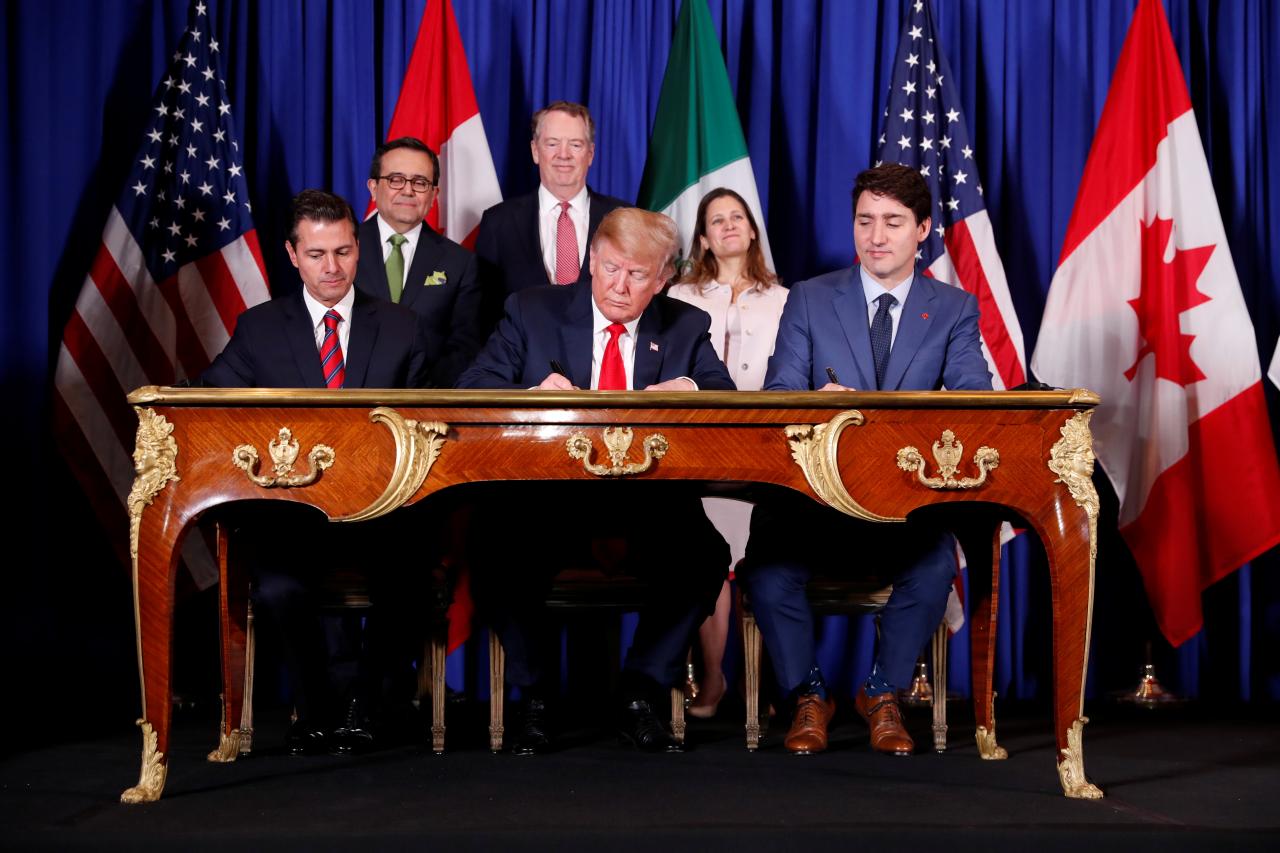The U.S., Canada and Mexico signed a new trade deal championed by President Donald Trump to replace the quarter-century-old NAFTA pact, capping a year of intense negotiations and offering a glimmer of certainty amid rising global tensions over trade.
Official text for the deal Trump has named the United States–Mexico–Canada Agreement (USMCA) has now been signed by all three countries.
Canada will change the order of the countries in its legal version of the name, putting Canada first (CUSMA).

Trump, Prime Minister Justin Trudeau and outgoing Mexican President Enrique Pena Nieto signed an authorization for the deal on Friday morning in Buenos Aires on the sidelines of the Group of 20 summit, with their ministers signing it shortly after. The vast majority of the pact still needs to be ratified by lawmakers in the three countries, but the signing enacts a handful of immediate protections, such as from auto tariffs.
Trudeau said the deal removes uncertainty hanging over the region: “The new North American Free Trade Agreement maintains stability for Canada’s entire economy.”
“As a result, the tariff-free access NAFTA guaranteed for more than 70 per cent of Canada’s total exports is secure. That’s essential for businesses, families, jobs, entrepreneurs, and hardworking people in every corner of our country. ”
During his remarks, Trudeau made a point of nudging Trump to remove the tariffs.
“There’s much more work to do in lowering trade barriers and in fostering growth that benefits everyone,” Trudeau said.
The U.S.’s punitive tariffs on steel and aluminium from other countries remain in place, along with stiff countermeasures from Canada and Mexico. As negotiations to remove those tariffs dragged on in the past few weeks, Canadian officials and emissaries insisted Canada would not take part in a fanfare-filled signing affair until the levies were lifted.
A Canadian official also said earlier Friday that the big advantage of signing onto the agreement now is a side letter on the auto industry exempting Canada of potential tariffs on exports of up to 2.6 million vehicles — well above current levels.
The deal — 32 chapters, 11 annexes and 12 side letters — sets new rules for the auto sector, including a higher threshold for North American content and rules requiring 40 per cent of car parts be made by workers paid at least $16 an hour.
It preserves a contentious dispute-resolution system the U.S. dearly wanted gone, extends patent protection for biologic drugs and allows U.S. farmers a 3.6-per-cent share of Canada’s famously guarded market for poultry, eggs and dairy products — a concession that dismayed Canadian dairy producers.
The original three-nation North American Free Trade Agreement took effect in 1994, but Trump has vilified it as a terrible deal that has fuelled a loss of U.S. manufacturing jobs. The three nations trade more than $1 trillion in goods annually.
